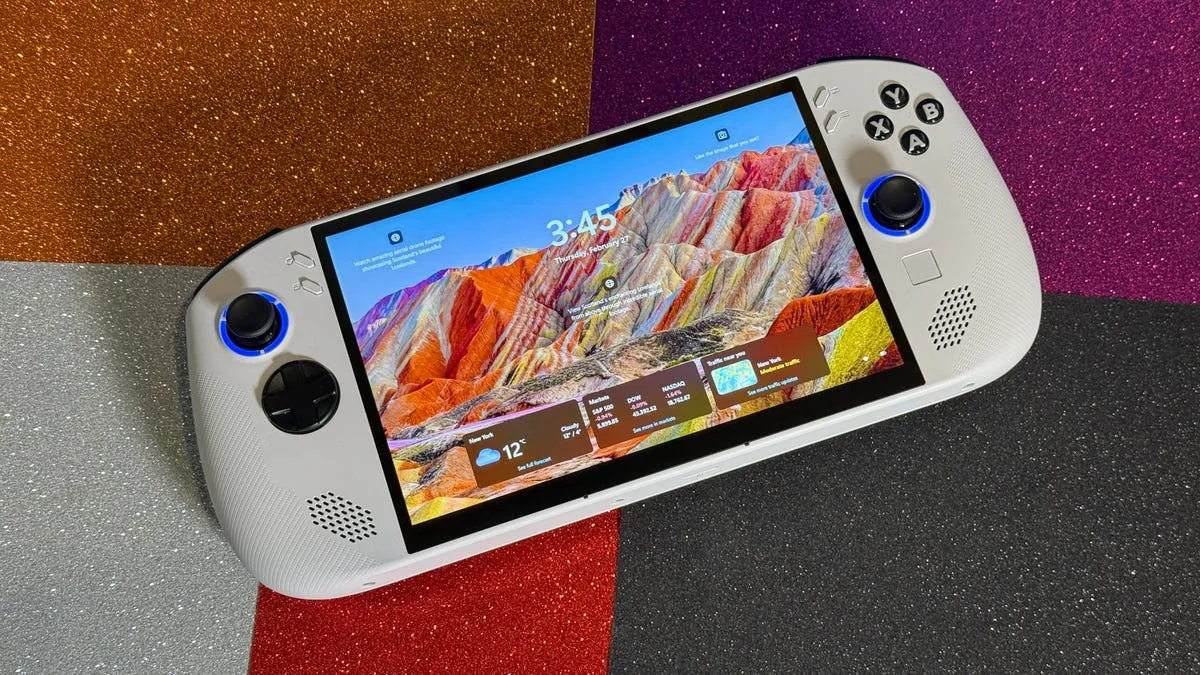
I was genuinely excited to try out Lenovo's latest Windows gaming handheld, the Legion Go S. My perspective on PC gaming handhelds has shifted positively since experiencing the Steam Deck, which allows me to enjoy my favorite Steam games on the go. However, my enthusiasm quickly waned upon discovering that Lenovo's new offering, a more compact follow-up to the original Legion Go, failed to deliver the gaming experience I had hoped for.
The Lenovo Legion Go S isn't cheap, starting at $730, and its size is somewhat misleading. While it is more compact than its predecessor, which featured an 8.8-inch display and detachable controllers, it still feels bulky when compared to the Steam Deck. Lenovo has equipped the Legion Go S with an impressive 8-inch, 1,920x1,200-pixel, 120Hz display, which initially seemed promising. The handheld’s analog sticks and buttons are comfortable, yet the overall experience left much to be desired.
My first step was using my Microsoft GamePass Ultimate subscription to download a few titles. I faced numerous issues, starting with "Indiana Jones and the Great Circle," which produced a graphics/driver error and refused to launch. "Forza Horizon 5" loaded slowly and performed poorly, even after adjusting the resolution and graphics settings. Although "Madden 25" technically launched, it was so stuttery that I found it unplayable. Lowering my expectations, I turned to indie games like "Chants of Sennar" and "Cuphead," which ran well. However, this raised the question: Is this all Windows handheld gaming can offer?
After spending time with the Lenovo Legion Go S, it became evident that the core issue was Windows itself. Unlike the Steam Deck, which provides a seamless gaming experience, the Legion Go S was hindered by cumbersome Windows software, frequent bugs, and compatibility issues. Many games simply didn’t work or ran poorly. My experience with indie favorites like "UFO 50" was enjoyable, but it wasn’t enough to justify the hefty price tag.
Labeling the Legion Go S as a smaller handheld is misleading. While it is more compact than the original Legion Go, the differences are minimal. The controls are fixed, lacking a kickstand, and the design feels bulkier than anticipated. The analog sticks and buttons feel sturdy but offer no significant advantages over the Steam Deck. The Steam Deck features additional buttons, better haptics, and two clickable trackpads, whereas the Legion Go S only has one small trackpad, which is primarily for navigating Windows.
Performance on the Legion Go S was disappointingly laggy. Launching applications and games took significantly longer than expected. The device uses an AMD Ryzen Z2 Go processor, which does not provide a performance boost over the Legion Go's Ryzen Z1 Extreme. In fact, many games ran worse than on the Steam Deck. Popular titles like "Elden Ring" and "Spider-Man 2" suffered from frame rate drops and glitches, even after lowering graphics settings. The battery life was also underwhelming, lasting only a few hours before needing a recharge.
Once again, Microsoft has failed to optimize its Windows 11 operating system for handheld gaming. The interface is cluttered with unnecessary features, and the Xbox app lacks clear guidance on game compatibility. Despite having access to numerous titles through GamePass Ultimate, the trial-and-error process of discovering which games work on the Legion Go S proved frustrating. While the flexibility of Windows allows for a broader range of games, it often feels like a tinker gadget rather than a user-friendly gaming device.
Lenovo plans to release a less expensive version of the Legion Go S running Valve's SteamOS later this spring. Given my current experience, I foresee this as the superior option for handheld gaming. The frustration of using the Windows 11 Legion Go S has led me to reconsider my gaming priorities. For anyone serious about handheld gaming, the OLED Steam Deck remains the more reliable choice. While it may only support Steam out of the box, it provides a smooth gaming experience without the complications of Windows.
Looking ahead, Nintendo is also set to launch a new Switch 2, which may elevate the bar for handheld gaming further. Although it won’t support Windows games, it promises to deliver a more refined experience. As the landscape of handheld gaming evolves, devices like the Lenovo Legion Go S may struggle to remain relevant in a competitive market.